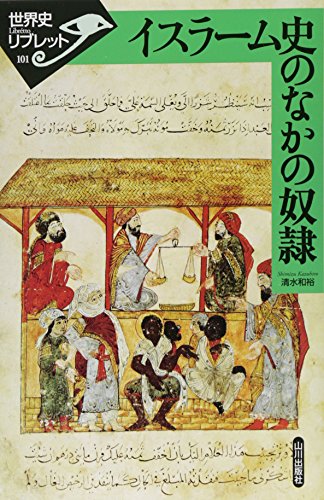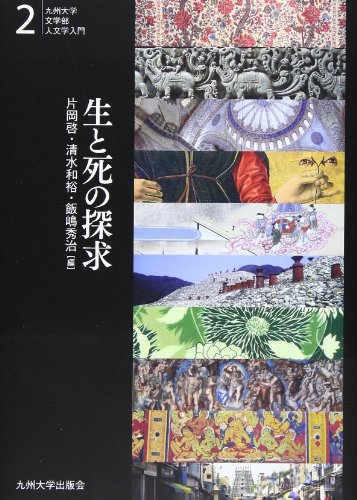18 0 0 0 イスラーム史のなかの奴隷
15 0 0 0 IR 中世イスラーム世界の黒人奴隷と白人奴隷--<奴隷購入の書>を通して
- 著者
- 清水 和裕 Shimizu Kazuhiro
- 出版者
- 九州大学大学院人文科学研究院
- 雑誌
- 史淵 (ISSN:03869326)
- 巻号頁・発行日
- vol.146, pp.153-184, 2009-03
- 著者
- 清水 和裕
- 出版者
- 公益財団法人 史学会
- 雑誌
- 史学雑誌 (ISSN:00182478)
- 巻号頁・発行日
- vol.115, no.6, pp.1142-1148, 2006-06-20 (Released:2017-12-01)
5 0 0 0 OA ヤズデギルドの娘たち--シャフルバーヌー傳承の形成と初期イスラーム世界
- 著者
- 清水 和裕
- 出版者
- 東洋史研究会
- 雑誌
- 東洋史研究 (ISSN:03869059)
- 巻号頁・発行日
- vol.67, no.2, pp.362-333, 2008-09
- 著者
- 清水 和裕
- 出版者
- 学術雑誌目次速報データベース由来
- 雑誌
- オリエント (ISSN:00305219)
- 巻号頁・発行日
- vol.38, no.2, pp.55-72, 1995
In AH352/AD963, Mu'izz al-Dawla, a Buwayhid ruler of Baghdad, introduced two official observances: the public lamentations for the martyrdom of al-Husayn at the Day of 'Ashura, and the festival of Ghadir al-Khumm. From that time on, the religious strife between Sunni inhabitants of Baghdad and Shi'is became more serious. And in this situation, Sunni people invented two counter-celebrations to the Shi'i's: the visits to the Grave of Mus'ab b. al-Zubayr, and the festival of the Cave. Each observation of Sunni's and Shi'i's worked as a place for sectarianism. Then, we must ask the historical meanings of the visit to the Grave of Mus'ab, and why Sunnis chose Mus'ab as a counterpart to al-Husayn.<br>Mus'ab was appointed as a governor of Basra by his brother, Ibn al-Zubayr, the anti-Caliph of the Umayyad Caliphate in the Second Civil War. After he suppressed the Shi'i movement of al-Mukhtar, he waged several wars against the Umayyads and was killed by 'Abd al-Malik. Many historical stories depict him as a generous and brave man, but without piousness.<br>We can point out at least three factors that led to the invention of visits to the Grave of Mus'ab, as a counter-celebration of that of al-Husayn. First, he massacred al-Mukhtar and his followers, who held up a slogan: Revenge for al-Husayn. Secondly, the tragic story of his death bears a structural resemblance to that of al-Husayn. And thirdly, these two graves are placed symmetrically with respect to the city of Baghdad. All these factors show that the visit to the Grave of Mus'ab bore a social significance only as a contrast to that of al-Husayn.<br>In the Buwayhid Dynasty, we can see some religious symbols and symbolical acts of Shi'i's such as: (1) visits to the graves of Shi'i Imams, (2) Shi'i calls for prayer, (3) slogans written to the gates and paths of their quarters, (4) public insults for Sahabas, (5) Catapults which they brought with to the graves. These symbols promoted their internal cohesiveness and invoked their sectarianism more openly, while Sunnis, who had been offended by Shi'i usage of these symbols, began to seek their own.<br>They then found a symbol, which corresponded to one of the most important Shi'i Symbols of “the Death of al-Husayn”, in a historical account of “the Death of Mus'ab”. That is to say, under the social situation of the aggravated religious strifes, they found a new meaning in the death of a governor who lived in the Second Civil war and symbolized it as a counterpart to “the Death of al-Husayn”, which led them to the visit of his grave.<br>We can point out that the sectarian symbols of both parties became more open and complicated, which it brought more serious confrontations in the later rule of the Buwayhids, and must be considered as a significant feature of the religious strife during this period.
2 0 0 0 OA ムスアブ・ブン・アッズバイル墓参詣 ブワイフ朝の宗派騒乱と「第二次内乱」
- 著者
- 清水 和裕
- 出版者
- 一般社団法人 日本オリエント学会
- 雑誌
- オリエント (ISSN:00305219)
- 巻号頁・発行日
- vol.38, no.2, pp.55-72, 1995 (Released:2010-03-12)
In AH352/AD963, Mu'izz al-Dawla, a Buwayhid ruler of Baghdad, introduced two official observances: the public lamentations for the martyrdom of al-Husayn at the Day of 'Ashura, and the festival of Ghadir al-Khumm. From that time on, the religious strife between Sunni inhabitants of Baghdad and Shi'is became more serious. And in this situation, Sunni people invented two counter-celebrations to the Shi'i's: the visits to the Grave of Mus'ab b. al-Zubayr, and the festival of the Cave. Each observation of Sunni's and Shi'i's worked as a place for sectarianism. Then, we must ask the historical meanings of the visit to the Grave of Mus'ab, and why Sunnis chose Mus'ab as a counterpart to al-Husayn.Mus'ab was appointed as a governor of Basra by his brother, Ibn al-Zubayr, the anti-Caliph of the Umayyad Caliphate in the Second Civil War. After he suppressed the Shi'i movement of al-Mukhtar, he waged several wars against the Umayyads and was killed by 'Abd al-Malik. Many historical stories depict him as a generous and brave man, but without piousness.We can point out at least three factors that led to the invention of visits to the Grave of Mus'ab, as a counter-celebration of that of al-Husayn. First, he massacred al-Mukhtar and his followers, who held up a slogan: Revenge for al-Husayn. Secondly, the tragic story of his death bears a structural resemblance to that of al-Husayn. And thirdly, these two graves are placed symmetrically with respect to the city of Baghdad. All these factors show that the visit to the Grave of Mus'ab bore a social significance only as a contrast to that of al-Husayn.In the Buwayhid Dynasty, we can see some religious symbols and symbolical acts of Shi'i's such as: (1) visits to the graves of Shi'i Imams, (2) Shi'i calls for prayer, (3) slogans written to the gates and paths of their quarters, (4) public insults for Sahabas, (5) Catapults which they brought with to the graves. These symbols promoted their internal cohesiveness and invoked their sectarianism more openly, while Sunnis, who had been offended by Shi'i usage of these symbols, began to seek their own.They then found a symbol, which corresponded to one of the most important Shi'i Symbols of “the Death of al-Husayn”, in a historical account of “the Death of Mus'ab”. That is to say, under the social situation of the aggravated religious strifes, they found a new meaning in the death of a governor who lived in the Second Civil war and symbolized it as a counterpart to “the Death of al-Husayn”, which led them to the visit of his grave.We can point out that the sectarian symbols of both parties became more open and complicated, which it brought more serious confrontations in the later rule of the Buwayhids, and must be considered as a significant feature of the religious strife during this period.
2 0 0 0 「奴隷」と隷属の世界史-地中海型奴隷制度論を中心として-
1 0 0 0 OA B. ルイス著『中東の人種と奴隷』,M. ゴードン著『アラブ世界の奴隷制』
- 著者
- 清水 和裕
- 出版者
- 東洋文庫
- 雑誌
- 東洋学報 = The Toyo Gakuho (ISSN:03869067)
- 巻号頁・発行日
- vol.73, no.1・2, pp.055-061(102~108), 1992-01
1 0 0 0 IR 紙の伝播と使用をめぐる諸問題
- 著者
- 清水 和裕
- 出版者
- 九州大学大学院人文科学研究院
- 雑誌
- 史淵 (ISSN:03869326)
- 巻号頁・発行日
- vol.149, pp.79-97, 2012-03
1 0 0 0 生と死の探求
- 著者
- 片岡啓 清水和裕 飯嶋秀治編
- 出版者
- 九州大学出版会
- 巻号頁・発行日
- 2013
1 0 0 0 非西欧世界における「清潔さ」「衛生」「健康」概念の変容
本研究の目的は、非西欧世界における「清潔さ」「衛生」「健康」「身体」概念の変容を、保健医療に関わる開発現象を中心に検討することであった。そのため、これまでの公衆衛生の社会史、文化史の成果を整理し、また各研究者の蓄積してきた諸社会の民族誌的・歴史的経験をもとにして、保健医療の導入と「清潔さ」「衛生」「健康」「身体」概念の変容に関する分析枠組みの検討・整理を行おうとしたのである。平成11年度は、西欧世界を中心とした保健医療の導入とその社会文化的影響に関する既存の文献を収集し、それらを分担して検討した。その主な内容は、上下水道の導入に関する社会文化的影響、保健医療の制度化と宗教の世俗化、保健医療の導入と疾病傾向の変容、キリスト教宣教師と「清潔」「衛生」概念であった。これにたいして、平成12年度は、各自の蓄積してきた諸社会の資料を整理した。その結果分かってきたことの一つは、20世紀初頭の植民地下で西欧の健康概念と西欧的核家族概念が結びつき、社会変容に寄与する可能性である。また、このようなテーマで研究する上で、新しい研究視角の議論も行い、人、モノ、言葉のネットワークをいかに把握するかという方法論的検討も行った。もっとも、現地調査を前提としていないこの研究では、資料的に限界があり、その意味で、本研究は今後の海外学術調査の予備的な作業という性格が強いものとなった。今後は、さらなる研究に向けた体制の立て直しを計る予定である。
1 0 0 0 OA 近代移行期の港市における奴隷・移住者・混血者-広域社会秩序と地域秩序
- 著者
- 弘末 雅士 鈴木 信昭 唐沢 達之 貴堂 嘉之 高橋 秀樹 荷見 守義 石川 禎浩 清水 和裕 土田 映子 大石 高志 疇谷 憲洋 佐々木 洋子 遠藤 正之 久礼 克季
- 出版者
- 立教大学
- 雑誌
- 基盤研究(A)
- 巻号頁・発行日
- 2007
地中海世界・イスラーム世界・欧米・中南米・南アジア・東南アジア・東アジアにおける奴隷の歴史を比較検討することができ、地域相互間の奴隷取引や奴隷をめぐる観念の展開を広域的に解明できた。また移住者の広域ネットワークの形成に果たす役割とともに、移住先の社会の秩序構築に積極的に関わったことが明らかとなった。そうした移住者を迎えた現地人妻妾のアジアにおける事例が比較検討され、彼女らやその子孫が、前近代において商業活動や港市の社会統合に重要な役割を担ったことが解明された。さらに近現代社会における新たな仲介者や媒体の存在に注目する必要性を認識した。


